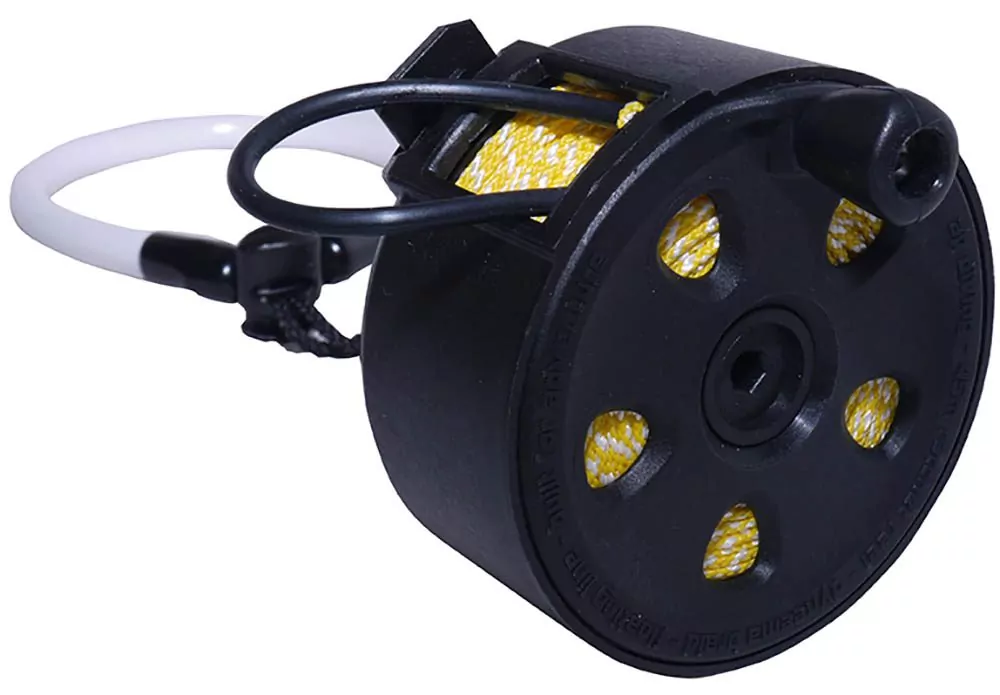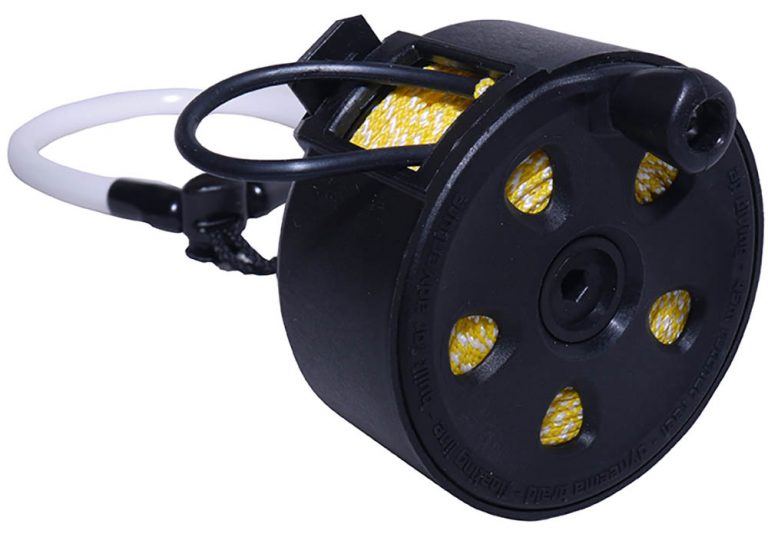REEL
45m Ratcheted Pocket

Appeared in DIVER April 2020
There is probably a whole YouTube channel devoted to divers’ delayed surface marker buoy fails. My dumbest sent my tube skipping across the surface in the wind because – well, because I can’t tie a knot. On another occasion, I met my DSMB sinking as I was coming up.
But most failed attempts to shoot DSMBs surface-wards involve problems with reels.
The most common are when uncontrolled line loops around part of the frame, such as the winder, or jumps the spool and catches in the spindle and prevents it spinning freely. Any kind of jam creates problems.
Even a partially filled DSMB can be hard to control and might start pulling you upwards, especially if you’re properly rather than over-weighted. The ascent will only accelerate as the air expands in your buoy – fully inflated, many have as much buoyancy as a BC.
You will probably need to let the DSMB go, meaning that the skipper knows where your DSMB is, but not where you are.
After a few mishaps, I’ve taken to carrying two DSMBs and, even if my buddy deploys his, I still set mine off for practice.
AP Diving’s Ratcheted Pocket Reel sets out to solve a number of common reel problems.
The Design
It’s an enclosed design, so apart from the slim gate through which the Dyneema line passes, the spool is held inside a plastic cover.
This prevents the line from “jumping” onto the axle, eliminating the problem of a line-stoppage and the bird’s nest that often results.
Debate rages as to whether an open or enclosed reel is best, and such heated arguments are usually a reliable indicator that there isn’t a right answer for everyone!
For myself, multiple open-reel cock-ups later, I’m ready to see if an enclosed design can eliminate the Warren faff.
Reels, of course, aren’t used only for controlling DSMBs. By chance, I was invited to join a project in Gibraltar organised by Clive Crisp of the local environment department – he was planning to sink a new shipwreck and needed a site-inspection. I used the AP reel at 20m to carry out a circular search for any areas of seabed that might be damaged by the sinking.
The reel is very simple to store. Only 8cm in diameter, it fits easily in most BC or dive-suit pouches, yet it packs 45m of hi-vis Dyneema line, claimed to be particularly resistant to abrasion.
The line also floats, which is an advantage on searches because it’s more likely to snag if it sinks to the bottom. Even so, I managed to hang it up on some sharp-edged metal wreckage, which it survived.
Next, I tested the reel by deploying a DSMB. With its ratchet action, you can simply flick a switch to engage the one-way drive, so as you reel up to your buoy you can reel in but not out.
If you drop the reel, it won’t unwind and it also lets you “climb the line”. You can easily see from the switch position whether you have it set to free-running or have engaged the ratchet.
The price you pay for a compact reel is that you have to wind the handle more than with a larger one – a larger spool pays out or takes in more line per rotation. I’m fine with that trade-off.
Conclusion
I very much liked the AP Diving Pocket Ratchet Reel. I’d be happy to use it as my primary DSMB reel and I liked its utility for searches. Highly recommended.

